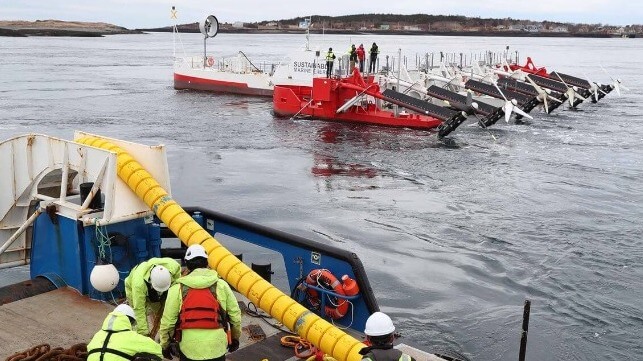Canada Gets its First Grid-Connected Tidal Energy Project

Tidal power startup Sustainable Marine has begun providing electricity to the grid from an experimental array in Nova Scotia's Bay of Fundy, a region famous for its extreme tidal currents.
"Sustainable Marine Energy achieved a first in Canadian tidal energy history, delivering power from a floating platform in Grand Passage to Nova Scotia’s electricity grid," said Nova Scotia Premier Tim Houston in a statement. "This project and others are positioning Nova Scotia as a global player in the tidal energy sector and are creating green technologies, green jobs, a cleaner environment and a predictable, renewable source of electricity."
Sustainable Marine CEO Jason Hayman said that the first grid power from the plant caps a decade of work, including the development of a special-purpose construction vessel and a specially designed anchor system.
The Bay of Fundy has the highest tidal range in the world, and about 160 billion tonnes of water move in and out with every change of the tide. The speed of the current at one designated tidal power test site in the bay can approach ten knots. Nova Scotia's natural resources agency believes that these immense forces could be harnessed to produce up to 2.5 gigawatts of energy to power the Canadian grid - nearly the same amount of capacity as a mega-scale offshore wind installation like Hornsea or Dogger Bank. Unlike wind, however, tidal power has the advantage of predictability and constancy.
To kick-start development, Nova Scotia has set aside space for about 30 MW of tidal power generating capacity for startups to trial their equipment. Sustainable Marine's system is the first to start grid operations, and it is moving ahead in a phased program, beginning with daylight-only operations. The objective is to ensure that it interacts safely with marine life and functions reliably before scaling.
The final step, the company says, will be to deploy its equipment at the Bay of Fundy's Minas Passage, a region of extreme currents known in the industry as the "Everest of tidal energy."
